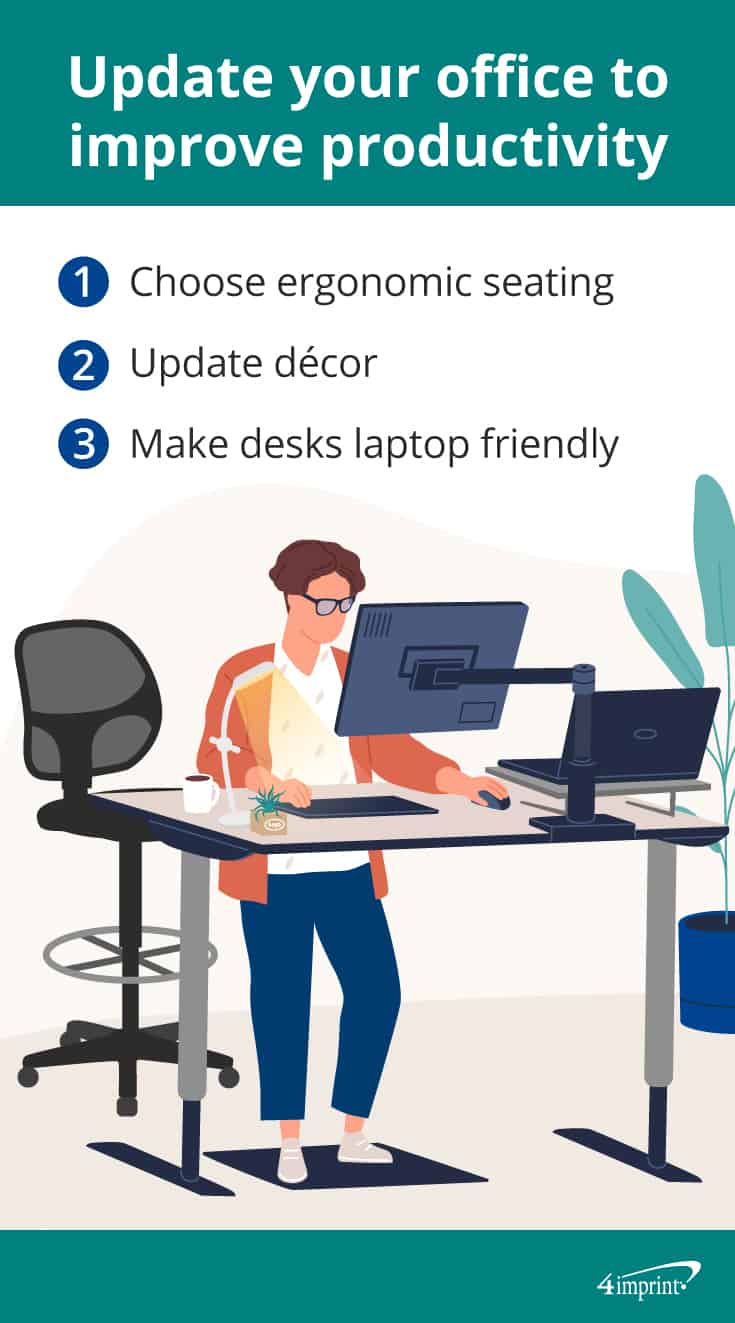Surprising fact: The average “workday” is eight hours, but the amount of productive work that gets done every day is about four hours and 12 minutes. Where do all those remaining hours and minutes go? They succumb to employee productivity killers.

While it isn’t possible for all 480 minutes in a workday to be productive (keep reading to find out why!), we’ve got a few tips and staff gifts that will help your employees get more done every day.
Employee productivity killer #1: Unnecessary meetings
While meetings can be a great way to get people on the same page, holding one that isn’t needed can grind productivity to a halt.
Before you send that calendar invite, make sure the meeting you’re about to hold is for one of the three Ds:
- Debate: Brainstorming and talking about the merits of different ideas.
- Discussion: An announcement that needs to be followed by a Q and A.
- Decision: A voting process where votes could be “lost” in a messenger or email forum.
Employee productivity killer #2: Too many ways to communicate
We’ve all had this happen: Our instant messenger pings and we click to look. Before we can fully absorb the message, our phone alerts us that we have a text. As we pick up the phone, our computer chimes to let us know an email has arrived. And then the messenger pings again, this time from another person.
In a matter of moments, we’ve gone from working on a project to bouncing between four conversations—all or none of which might be urgent.
Help keep staff on task:
- Set message priorities: For example, email should be checked and answered twice daily, messenger every two hours and text in the event of an emergency.
- Stop the source: Recommend staff members close email and set their messenger status to “away” so people aren’t waiting on an immediate answer.
Employee productivity killer #3: Not enough sleep
One in three adult Canadians report that they don’t get enough sleep, one in five don’t find their sleep refreshing, and one in three have problems staying awake during the day.
What’s more, people with moderate to severe insomnia have a 107% decrease in productivity when compared to those without insomnia. Put simply: More sleep means more productive staff members.
Help your employees grab more ZZ’s:
- Bring in an expert to discuss the value of sleep with your staff.
- Make getting enough sleep part of your wellness program. You can encourage staff members to turn in earlier by offering staff gifts like a hot and cold eye mask or a travel blanket.
- For staff members in situations where fatigue could be a hazard, set their work schedule to provide rest times when they most need it.
Employee productivity killer #4: Out-of-date offices
Both computers and office furniture have gone through multiple updates over the last 20 years—and it may be time for your office to do the same.

Desks: Desk set-ups that were designed for desktop computers (or typewriters) can be made laptop-friendly by adding monitor stands, second screens and accessories like an ergonomic mouse or blue light glasses to make screen time more comfortable.
Seating: Does your staff need standing desks? Updated ergonomic seating? Make sure the way they sit or stand helps prevent back pain or other issues.
Environment: Does everyone’s workstation seem dark and sterile? Brighten things up, whether it’s with a desk light or a plant.
Employee productivity killer #5: Not enough breaks
According to one study, the most productive people work for 52 minutes, then take a break for 17 minutes.
While roughly two hours a day sounds like a lot of down time, the amount of high-quality, fully engaged work your staff will produce will more than make up for those “unused” hours.
Encourage staff to set timers when they work or schedule regular down time in their day.
Help staff get more done
Employee productivity killers can quickly drain the work out of the workday. But with the help of these tips and staff gifts, your employees will be well-rested, stay on task, and make the most of every minute.
Key Takeaways:
- Encourage staff to take breaks.
- Configure workspaces for maximum comfort.
- Ensure staff is getting enough sleep.
- Only hold necessary meetings.
